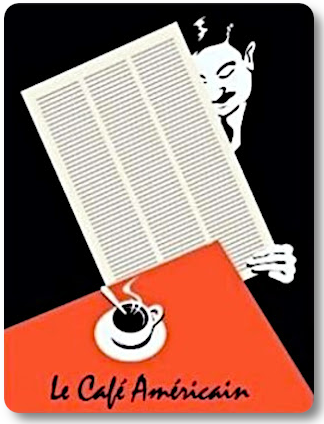Secondary offering in the equity of the CEF fund is pending, although this tends to be a wash less transaction fees because the proceeds are used to expand the base of metals held.
The premiums expand and contract in the funds depending on sentiment on the future course of gold and silver bullion prices. The premiums on the ETFs are relatively stable, representing 1/10 ounce of the metal with a discount to the spot price for management fees. There is no NAV presented because the volume of any metal that might be underlying the price fluctuations varies greatly, and can lag.
12 November 2009
NAVs of Certain Precious Metal ETFs and Funds
Fraud on the Street in the Purchase of 3COM
The fraud is becoming more blatant on all fronts.
Mary Shapiro and the SEC should immediately subpoena the records of options purchases in 3COM and Hewlett-Packard for this week, and look for unusually large purchases. But chances are that they will do nothing, because there is a soft partnership between the government and Wall Street.
Make no mistake. Front running and monetary bubbles are not victimless crimes, anymore than robbing a grocery store at gunpoint is a victimless crime. They take from the many to give to the few.
There are some smokey allusions to 'calendar spreads' being put forward, but this is disinformation, and does not speak to the surge in stock buying and the pattern of insider trading. It was fraud, pure and simple.
And this is just the tip of the iceberg. The basis of the SP rally on high frequency trading and a liquidity bubble is a fraud, and will be exposed as such when the bottom falls out of the market. And the people know who the primary actors are in this.
The Obama Administration is a disgrace.
Bloomberg
3Com Option Trades May Have Been More Than ‘Luck’ Before Buyout
By Jeff Kearns
Nov. 12 (Bloomberg) -- Analysts say good timing alone doesn’t account for trading in bullish 3Com Corp. options yesterday.
Volume in contracts to buy shares of the Marlborough, Massachusetts-based company surged to the highest level since September 2007 before Hewlett-Packard Co. said it would buy the maker of computer-networking equipment for $2.7 billion.
“I don’t believe in that much luck,” said Steve Claussen, chief investment strategist at OptionsHouse LLC, the Chicago- based online brokerage unit of options trading firm PEAK6 Investments LP, and a former market maker at the Chicago Board Options Exchange. “If you’re on the other side of someone buying calls and a takeover is announced, it’s like someone held you up at gunpoint. It’s like you’ve been robbed and you feel violated.”
Call options that convey the right to acquire stock for a given price by a certain date usually offer higher returns to traders speculating on takeovers. The U.S. Securities and Exchange Commission polices the options market to ensure investors aren’t engaging in insider trading.
More than 8,000 3Com calls changed hands yesterday, 17 times the four-week average. The most active were contracts conveying the right to purchase 3Com for $5 through Nov. 20, followed by December $5 calls. The shares rose 5.2 percent, the most since Sept. 28, to $5.68 in Nasdaq Stock Market composite trading prior to the announcement.
Almost 4,000 of the November $5 calls and 3,300 December $5 calls traded, with almost all of the transactions occurring at noon. That compares with a total of six puts giving the right to sell 3Com shares. Hewlett-Packard, the world’s largest personal- computer maker, agreed to pay $7.90 a share in cash for 3Com, a 39 percent premium to yesterday’s closing price.
More than 22 million shares of 3Com changed hands in the stock market yesterday, compared with this year’s daily average of 4.85 million and the most since March 2008. Trading was heaviest in the hour after 11 a.m. in New York, data compiled by Bloomberg show.
“Somebody knew something was coming,” said Stefen Choy, founder of Livevol Inc., a San Francisco-based provider of options market data and analytics. “It looks like very unusual call buying. I see this very frequently when there’s a takeover...”
Goldman Sachs Group Inc. advised 3Com on the transaction, while Morgan Stanley helped Hewlett-Packard, according to data compiled by Bloomberg. Both banks are based in New York. 3Com has its headquarters in Marlborough, Massachusetts, and Hewlett- Packard is based in Palo Alto, California...
11 November 2009
Guest Post: Ralph Cioffi's Acquittal for Fraud - Janet Tavakoli
By Janet Tavakoli of Tavakoli Structured Finance
Ralph Cioffi and Matthew Tannin, former hedge fund managers and co-heads of Bear Stearns Asset Management, were acquitted yesterday (November 10) of all six counts in their fraud trial” U.S. v. Cioffi, 08-CR-00415, U.S. District Court for the Eastern District of New York (Brooklyn).
"I worked at Bear Stearns in the late 1980s and remembered amiable newcomer Ralph Cioffi to be Bear Stearns’ most talented and successful salesman of mortgage-backed securities. He was usually even tempered, always hard working, and thoughtful. I headed marketing for the quantitative group run by both Stanley Diller, one of the original Wall Street “quants,” and Ed Rappa (now CEO of R.W. Pressprich & Co, Inc.), a managing partner. Ralph was a popular salesman with my colleagues and a heavy user of our quantitative research. In gratitude for analytical work that helped him make sales, Ralph presented our group with an $800 portable bond calculator purchased out of his own pocket. When I was lured away from Bear Stearns by Goldman Sachs, Ralph Cioffi tried to persuade me to stay, matching the offer. Around 20 years had passed and since then we occasionally stayed in touch, but we were not close friends.Excerpted with permission from the publisher, John Wiley & Sons, from Dear Mr. Buffett, What an Investor Learns 1,269 Miles from Wall Street , by Janet Tavakoli. © 2009 by Janet Tavakoli.
Among other hedge funds, Bear Stearns Asset Management (BSAM) managed the Bear Stearns High Grade Structured Credit Strategies fund. By August 2006, the fund had a couple of years of double-digit returns. BSAM launched the Bear Stearns High Grade Structured Credit Strategies Enhanced Leverage fund taking advantage of the first fund’s “success.”
Both funds managed by BSAM included CDO and CDO-squared tranches backed in part by subprime loans and other securitizations (collateralized loan obligations) backed by corporate loans and leveraged corporate loans. In August 2006 when BSAM was setting up the Enhanced Leverage fund, other hedge fund managers (like John Paulson), shorted subprime-backed investments.
Investors in the two funds managed by BSAM had been getting double digit annualized returns on high-grade debt at a time when treasuries were yielding less than 5 percent. In fixed income investments, that usually means investors are taking risk.
Ralph seemed to have similar views to mine on CPDOs, the leveraged product that I had said did not deserve a AAA rating. Ralph told me he thought the AAA rating could “lull the unsophisticated investor to sleep,” and that for the purposes of his hedge funds, if he liked an investment-grade-rated trade he could have the same trade without paying fees and: “easily lever up … fifteen times.” To paraphrase Warren Buffett, if the price of your investments drops, leverage will compound your misery.
On May 9, 2007, Matt Goldstein called and asked me if I had a chance to look at the registration statement for a new initial public stock offering (IPO) called Everquest Financial, Ltd (Everquest). Everquest is a private company formed in September 2006, and the registration statement was a required filing in preparation for its going public. The shares were held by private equity investors, but the IPO would make shares available to the general public.
Everquest was jointly managed by Bear Stearns Asset Management Inc, and Stone Tower Debt Advisors LLC, an affiliate of Stone Tower Capital LLC. I was curious, but I was swamped. I told him no, I was very busy and had not even had a chance to glance at it. He called again asking if I had seen it, and again I said no, “Go away.” The next morning I ignored Matt’s voice mails, but finally took his call the afternoon of Thursday May 10 telling him that I still had not looked at the registration statement and had no plans to do so that day. My first call on the morning of Friday, May 11, 2007, was again from Matt Goldstein. He thought the IPO might be important.
I went to the SEC’s website, and as I scanned the document I thought to myself: Has Bear Stearns Asset Management completely lost its mind? There is a difference between being clever and being intelligent. As I printed out the document to read it more thoroughly, I put aside the rest of my work and said: “Matt, you are right; this is important.” I was surprised to read that funds managed by BSAM invested in the unrated first loss risk (equity) of CDOs. In my view, the underlying assets were neither suitable nor appropriate investments for the retail market.
I did not have time for a thorough review, so I picked a CDO investment underwritten by Citigroup in March 2007 bearing in mind that if the Everquest IPO came to market, some of the proceeds would pay down Citigroup’s $200 million credit line. Everquest held the “first loss” risk, usually the riskiest of all of the CDO tranches (unless you do a “constellation” type deal with CDO hawala), and it was obvious to me that even the investors in the supposedly safe AAA tranches were in trouble. Time proved my concerns warranted, since the CDO triggered an event of default in February 2008, at which time Standard & Poor’s downgraded even the original safest AAA tranche to junk.
The equity is the investment with the most leverage, the highest nominal return, and is the most difficult to accurately price. The CDO equity investments were from CDOs underwritten by UBS, Citigroup, Merrill, and other investment banks.
Based on what I read, Everquest’s original assets had significant exposure to subprime mortgage loans, and the document disclosed it, “a substantial majority of the [asset-backed] CDOs in which we hold equity have invested primarily in [residential mortgage-backed securities] backed by collateral pools of subprime residential mortgages.” Based on my rough estimates, it was as high as 40 percent to 50 percent.
I explained my concerns to Matt in a general way. Among other concerns: (1) money from the IPO would pay down Everquest’s $200 million line of credit to Citigroup; (2) the loan helped Everquest buy some of its assets including CDOs and a CDO-squared from two hedge funds managed by BSAM, namely the Bear Stearns High-Grade Structured Credit Strategies Fund that had been founded in 2003 and the Bear Stearns High-Grade Structured Credit Strategies Enhanced Leverage Fund (“Enhanced Leverage Fund”) launched in August 2006; and (3) the assets appeared to include substantial subprime exposure.
Matt Goldstein posted his story on Business Week’s site later that day. Initially it was called: The Everquest IPO: Buyer Beware, but after protests from Bear Stearns Asset Management, Business Week changed the title to Bear Stearns’ Subprime IPO. I hardly think that pleased Bear Stearns more.
Ralph Cioffi contacted me about the Business Week article. He said that dozens of IPOs like Everquest had been done—mostly offshore so as not to deal with the SEC. According to Ralph, BSAM’s hedge funds and Stone Tower’s private equity funds would own about 70 percent of Everquest stock shares (equity), and they had no plans to sell “a single share at the IPO date.” They planned to use the IPO proceeds to pay down the Citigroup credit line and possibly buy out unaffiliated private equity investors.
I responded that verbal assurances that there are no plans to sell a share at the IPO date are meaningless. Publicly traded shares can be sold anytime. But even if the funds kept their controlling shares, it was not good news. Retail investors would have only a minority interest which would be a disadvantage if they had a dispute with the managers.
Ralph claimed that subprime was “actually a very small percent of Everquest’s assets.” He reasoned that on a market value basis the exposure to subprime was actually negative because Everquest hedged its risk. Technically, Ralph might have been correct—but the registration statement for the Everquest IPO itself suggested otherwise: “The hedges will not cover all of our exposure to [securitizations] backed primarily by subprime mortgage loans.”It is fine to talk about net exposure (left over after you protect yourself with a hedge), but one usually also discusses the gross exposure (of the assets you originally bought). Hedges cost money, so they can reduce returns.
Ralph Cioffi said CDO equity is “freely traded and easily managed.” I countered that CDO equity may be easy for Ralph to value, but investment banks and forensic departments of accounting firms told me they have trouble doing it.
I told him that if this were a CDO private placement, it would have to be sold to sophisticated investors and meet suitability requirements, but since it is in a corporation, it can be issued as an initial public offering (IPO) to the general public. It seemed to be a way around SEC regulations for fixed income securities, and it was not suitable for retail investors in my view.
Ralph said he would talk to his lawyers about changing the IPO’s registration statement to add a line about third party valuations. We seemed to be talking at cross purposes, since the registration statement already said that third party valuation would occur at the time of underwriting. The problem with that was that the assumptions for pricing would be provided by a conflicted manager, and assumptions are critical in determining value. Moreover, on an ongoing basis, one had to rely on a conflicted management’s assumptions for pricing.
Ralph did not seem to want to end the discussion, so I asked him if there was something he wanted me to do. He said it would be great if I issued a comment saying I was quoted “out of context,” that my being quoted in Business Week lent credibility to the article and was not helping me, and that I would be “better served” writing my own commentary. I ignored what I perceived to be a thinly veiled threat. I told him that if he wanted me to write a commentary, I would do a thorough job of raising all of the objections I had just raised with him. Ralph seemed unhappy but my thinking he was a hedge fund manager from Night of the Living Dead was the least of his problems."
SP Futures Daily Chart
An obvious reflationary effort that, without serious financial reform and economic rebalancing, will degenerate into another phase of the financial crisis and the ongoing banking fraud in a corrupt partnership with government.
"There is a mysterious cycle in human events. To some generations much is given. Of other generations much is expected.
This generation of Americans has a rendezvous with destiny." Franklin D. Roosevelt
Same chart as above, but fitted with curved rather than linear trendlines.

































